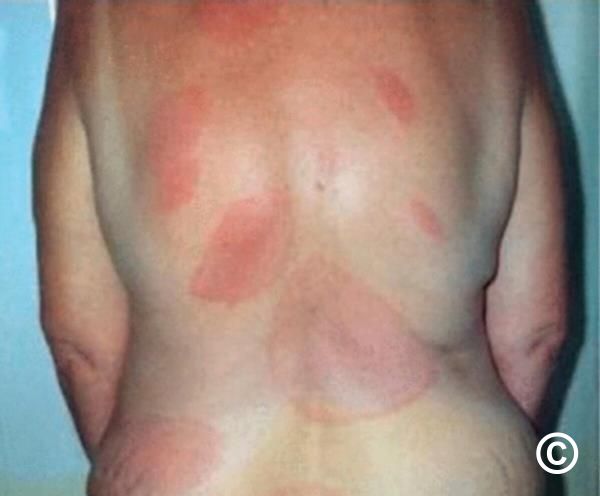Lyme Condition Recognition-- Know the Symptoms and Remain Protected
Lyme illness stays a significant public health and wellness concern, specifically in areas where ticks are widespread. What details actions can individuals take to guard themselves versus this often-overlooked condition, and exactly how can communities enhance their overall feedback?
Recognizing Lyme Condition
Lyme disease, a common tick-borne illness, is brought on by the bacterium Borrelia burgdorferi. This condition is largely transferred to human beings via the bite of contaminated black-legged ticks, generally called deer ticks. The geographical distribution of Lyme condition is mostly concentrated in the northeastern, north-central, and Pacific coastal regions of the USA, although situations have actually been reported in various other areas also.
The life cycle of the tick plays a critical function in the transmission characteristics of Lyme condition. Human exposure to ticks is particularly raised in wooded or grassy locations, especially during warmer months when ticks are most active.
Comprehending the ecology of Lyme condition is crucial for reliable avoidance techniques. Awareness of tick habitats and actions can substantially reduce the possibility of attacks. Moreover, public education and learning on correct tick elimination methods and the relevance of personal safety measures can help alleviate the risk of contracting this facility and possibly debilitating illness.
Typical Symptoms to Recognize
Recognizing the usual symptoms of Lyme illness is essential for early medical diagnosis and treatment. The initial symptom often consists of a particular skin breakout referred to as erythema migrans, which shows up as a red round patch with a central clearing up, resembling a "bull's- eye." This rash commonly develops within 3 to 1 month after a tick bite and can differ in dimension.
Along with the rash, individuals may experience flu-like signs, consisting of fever, cools, fatigue, muscle mass aches, and joint pain. These signs and symptoms can be misleading, as they prevail to lots of various other diseases. If left untreated, Lyme illness can advance to a lot more severe symptoms, including neurological problems such as meningitis, facial palsy, or cognitive problems.
Prompt treatment can stop the progression of the condition and minimize the threat of lasting difficulties. Watchfulness is crucial in identifying and addressing the signs linked with Lyme condition.

Danger Factors and Transmission
Understanding the threat elements and settings of transmission related to Lyme illness is essential for efficient avoidance. Lyme condition is largely transmitted through the bite of infected black-legged ticks, generally referred to as deer ticks. These ticks thrive in wooded, verdant, and brushy locations, making outdoor activities in such environments a considerable risk factor for transmission.
People that engage in exterior entertainment tasks such as horticulture, walking, or camping view it now are more probable to experience these ticks. Additionally, living in or going to regions where Lyme disease is native to the island, including parts of the northeastern, north-central, and Pacific coastal regions of the United States, raises direct exposure threat. Certain occupations, such as landscape design, forestry, and farming, also pose enhanced threats as a result of extended outside exposure.
Moreover, the life process of the tick, which needs details ecological problems, affects transmission characteristics. Variables such as climate modification, which affects tick habitats and populaces, can even more exacerbate threat. Comprehending these factors is crucial for people to acknowledge their potential direct exposure and take required precautions to decrease their danger of having Lyme illness.
Efficient Prevention Strategies
On a regular basis executing efficient avoidance techniques is vital for lowering the risk of Lyme illness. The first line of defense is to stay clear of locations known for high tick populations, especially wooded and grassy settings.

Preserving a tick-safe setting around homes is equally vital. This includes keeping lawns cut, getting rid of high yards and brush, and developing an obstacle of timber chips or gravel between yards and woody locations. Informing family and pals regarding these avoidance approaches cultivates neighborhood understanding and alertness, more lowering the chance of Lyme disease transmission. By taking on these measures, individuals can successfully secure themselves from the dangers connected with Lyme illness.
Value of Very Early Detection
Early detection of Lyme condition considerably affects therapy outcomes and can stop the progression of the illness - Lymecare Alliance. The onset of Lyme disease are frequently noted by flu-like signs, including fever, fatigue, and the particular erythema migrans rash. Identifying these indications quickly permits for timely intervention, which usually involves a training course of prescription antibiotics. When treated early, a lot of people recoup fully without long-lasting problems.
Alternatively, delayed diagnosis can bring about much more serious indications of the condition, consisting of neurological and cardiac issues, which can be extra challenging to treat and may cause extended wellness problems. Late-stage Lyme condition may need extensive antibiotic therapy and can result in persistent signs and symptoms, significantly impacting quality of life.
On the whole, boosting awareness around the very early indications of Lyme illness is important for efficient administration and prevention of even more major health repercussions. Early intervention is not only advantageous for the also critical however private in decreasing the overall worry of Lyme condition in the neighborhood.
Conclusion
In summary, enhancing awareness of Lyme Illness is crucial for advertising very early detection and efficient avoidance. Eventually, a cumulative effort to stay notified and vigilant versus Lyme Disease can boost neighborhood wellness and reduce the influence of this potentially severe illness.
Lyme illness continues to be a significant public health worry, especially in areas where ticks are prevalent.The life cycle of the tick plays a critical role in the transmission characteristics of Lyme condition.Recognizing the danger aspects and settings of transmission associated with Lyme illness is crucial for effective prevention. Lyme illness is largely transmitted through the bite of infected black-legged ticks, generally known as deer ticks. Comprehending these aspects is crucial for individuals to recognize their prospective exposure and take essential safety measures to lessen their threat of having Lyme condition.